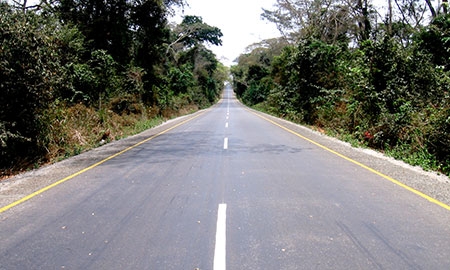In recent years, Angola has been one of the world's fastest-growing economies. Growth exceeded 10% per annum in the first decade of this century and was 5.3% in 2013. The national logistics network, which had been very badly damaged during the country's long civil war, adds to the cost of doing business in Angola and to the cost of living for Angolans. The Minister of Transport, Mr Augusto Da Silva Tomás, recognizes that there is “a significant deficit in infrastructure which limits the chances of development and the projection of our economy in the international market”. The country is now taking this situation as an opportunity to invest in an integrated intermodal transport network for the 21st century, so as to exploit to the full its rich natural resources, while simultaneously harnessing the potential of its geostrategic position in Africa.
Investment in railways is a key element in this strategy, with Mr Da Silva Tomás talking of a “network of more than 10,000 km long being created over the next 10 to 15 years and which will become the fundamental element of territorial, economic and social cohesion”. Integration of railways with major ports and airports is being achieved through the development of three major east-west logistics corridors, in the areas of Luanda, Lobito and Namibe and these corridors will facilitate trade and investment in agriculture and natural resources. The construction of new north-south railways to link with the presently unconnected three major lines will then create a true national rail network for the first time. The Secretary of State for Transport, Mr José Kuvíngua, adds that “rail is the key to a competitive industrial sector and we will be aiming to support the transport of all types of cargo, including mining produce, between industrial zones and seaports”.
Mr Kuvíngua stresses that Angola “can no longer look at the different modes of transport in isolation but instead go straight for integrated transport solutions”. There is therefore also to be substantial investment in seaports and airports, including the building of a new airport for Luanda at Bom Jesus, 40 km from the city. Angola sees a very major role for the private sector in these developments, with the involvement of companies such as Multiterminais and Unicargas in the modernization and expansion of ports seen as an example, whereby the state owns the infrastructure and private sector companies operate the facilities. Mr Kuvíngua adds that “the state is gradually withdrawing from the day-to-day functions that can be carried out by the private sector”.
Private-sector involvement in the transport sector may be by way of PPP (public-private partnerships) or BOT (build-operate-transfer) with these models already having been used in several port developments. Mr Da Silva Tomás stresses that Angola has an open economy, open to foreign investment, while Mr Kuvíngua highlights the legislative changes that have now been implemented to “provide the private sector with the same kind of opportunities in the railway and airport management sectors” that have already been trailered in investments in seaports and that “the openings for PPP's are vast and will be at the forefront of future development”.
The geostrategic position of Angola also means that success in completing its national intermodal transport network will bring tremendous benefits to the whole of the African Great Lakes region. The Economy Minister, Mr Abrahao Gourgel, states that this “will restore Angola to its former role as the intermodal transport hub for the entire region”, providing efficient outlets to Angola's seaports for the mineral riches of countries such as Zambia, Democratic Republic of Congo, and Zimbabwe. As an example, Mr Kuvíngua mentions that transporting ores from Zambia and Democratic Republic of Congo through the Lobito Corridor would cut one-third off the distance from mines to seaport, with obvious benefits for the whole wider region. Angola's Minister of Foreign Affairs, Mr Georges Rebelo Chikoti, goes even further in stressing the importance of economic development in bringing about peace in the region, a process in which President Dos Santos has been very much engaged.
Angola has its needs in the whole field of transport clearly identified, its ambitions and strategies clearly formulated, and its implementation policies clearly set out, all while accepting its wider regional role and responsibilities. Its record so far in the 21st century makes the country a very strong contender for leadership in Africa with success in its transport sector a clear driving factor in fulfilling this role.

0 COMMENTS